Crypto Swap Fee Estimator
Swap Fee Calculator
Estimate your transaction costs for swapping between supported tokens
Quick Takeaways
- CriptoSwaps markets itself as a no‑KYC, instant cross‑chain swap service, but concrete data on fees and security is scarce.
- Typical advantages claimed: wallet‑only trading, low latency, support for MetaMask and other Web3 wallets.
- Potential downsides include limited public transparency, no known proof‑of‑reserves audit, and an unclear regulatory stance.
- When compared to established exchanges (Coinbase, Kraken, Bybit), CriptoSwaps trails on disclosed security measures and user support.
- For users who value speed and anonymity above full regulatory compliance, it might fit - otherwise, stick with vetted platforms.
What is CriptoSwaps?
When you hear the name CriptoSwaps is a crypto exchange that focuses on instant, cross‑chain token swaps without requiring a traditional account or extensive KYC, you might wonder how it fits into the crowded 2025 landscape.
In short, CriptoSwaps positions itself as a "swap‑only" service: you connect your wallet, pick two tokens, and the platform routes the trade through smart contracts. The idea is to let users stay in control of private keys while avoiding the deposit‑withdraw cycle typical of centralized exchanges.
How a Crypto Swap Works (and Why CriptoSwaps Calls It ‘Peer‑to‑Contract’)
To grasp CriptoSwaps, you first need a quick refresher on the Crypto swap is a direct exchange of one cryptocurrency for another using a single transaction, often powered by smart contracts. Unlike a traditional order‑book exchange, a swap does not match buyers and sellers; instead, a routing algorithm finds the best liquidity pools and executes the trade in one step.
Here’s the typical flow on CriptoSwaps:
- Connect a Web3 wallet (MetaMask, Trust Wallet, or a mobile wallet).
- Select the source token (e.g., USDT) and the destination token (e.g., ETH).
- The platform queries multiple liquidity sources, including DEX aggregators and bridge protocols.
- After you confirm, a smart contract swaps the tokens and sends the output directly back to your wallet.
The whole process usually settles in seconds, and you never hand over your private keys.
Wallet Integration - MetaMask and Beyond
One of the selling points CriptoSwaps advertises is seamless MetaMask is a browser‑extension wallet that lets users interact with Ethereum‑compatible dApps support. The platform also claims compatibility with mobile wallets that use WalletConnect, meaning you can trade from a phone without installing a dedicated app.
If you already have a wallet set up, the onboarding steps are minimal: click "Connect," approve the connection, and you’re ready to swap.
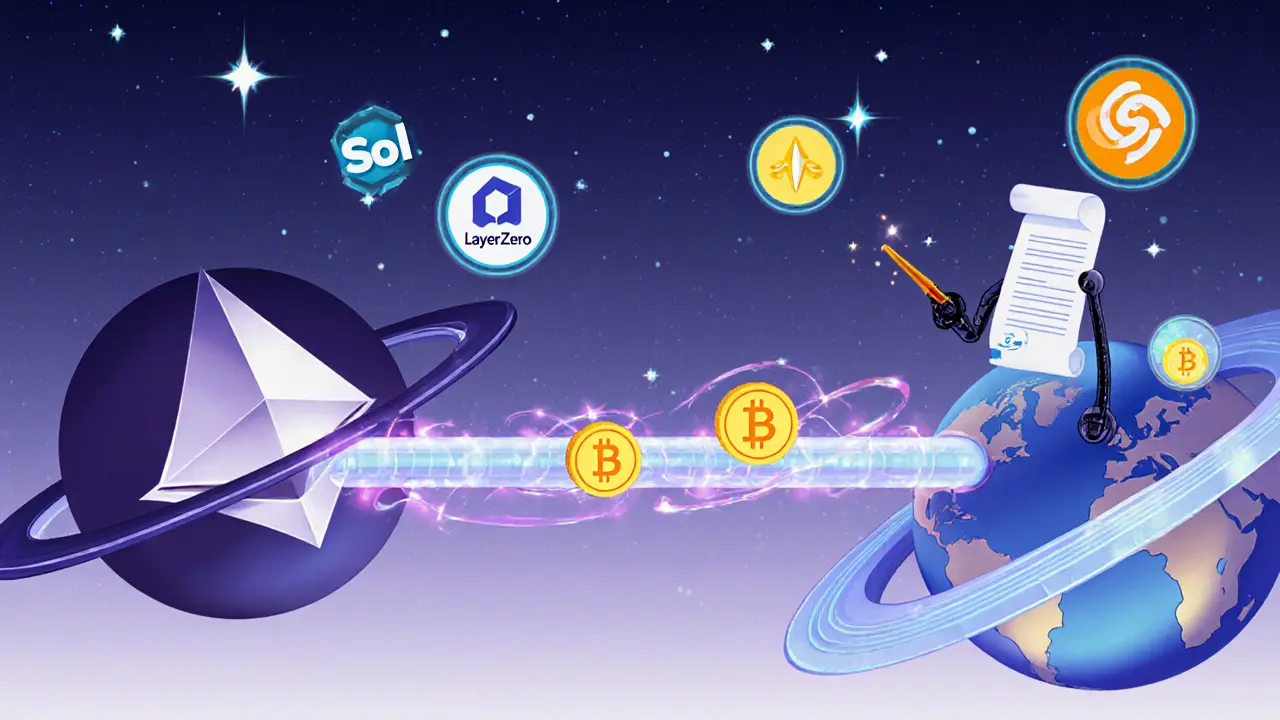
Cross‑Chain Swaps - The Promise of One‑Click Multi‑Chain Trading
CriptoSwaps markets itself as a Cross‑chain swap is a function that lets users exchange tokens that live on different blockchains in a single transaction, typically using bridges or multi‑chain liquidity pools service. In practice, that means you could trade Binance Smart Chain BNB for Solana SOL without manually bridging assets.
The technology stack behind such swaps usually combines a few layers:
- On‑chain bridge contracts (e.g., LayerZero, Axelar) that lock tokens on one chain and mint equivalents on another.
- Liquidity aggregators (e.g., 1inch, Paraswap) that find the best price across DEXes.
- Routing algorithms that optimize for gas cost and slippage.
Because CriptoSwaps doesn’t publish its exact integrations, it’s hard to verify which bridges are in use, but the industry standard today includes the three listed above.
Fees & Pricing - What Does It Actually Cost?
Unfortunately, the public documentation for CriptoSwaps is sparse. The only clue comes from a third‑party review that mentioned “low fees,” but no exact numbers were disclosed.
Based on typical fee structures for swap‑focused services in 2025, you can expect two main components:
- Network gas fees - paid to the underlying blockchain (Ethereum, BSC, etc.). These are unavoidable and vary with congestion.
- Platform service fee - usually a small percentage (0.1%-0.3%) taken by the swap service for routing and bridge usage.
If CriptoSwaps follows the industry trend, its service fee is likely at the lower end to attract users who want “no‑KYC, cheap swaps.” However, without an official fee schedule, you should treat the platform’s cost as “unknown until you simulate a trade.”
Security & Compliance - How Safe Is Your Money?
Security is where most seasoned traders pause. The 2024‑2025 wave of breaches (Bybit, WazirX) forced exchanges to adopt new standards like Proof‑of‑reserves is a audit method where an exchange publicly verifies that the total user balances match the assets held on‑chain audits, multi‑layered Cold storage is a method of keeping the majority of crypto assets offline to prevent hacking, and AI‑driven fraud detection.
CriptoSwaps does not publish any proof‑of‑reserves report, nor does it mention a cold‑storage strategy on its landing page. The platform also claims “no KYC,” which is attractive for privacy‑focused users but can raise red flags for regulators.
For a more concrete security picture, look at two industry benchmarks:
- SEC is a U.S. regulator that oversees securities, including some crypto assets under its jurisdiction has tightened its framework in 2025, demanding clearer compliance from exchanges that serve U.S. customers.
- Established competitors publish regular audits (e.g., Kraken’s quarterly proof‑of‑reserves, Coinbase’s SOC 2 reports). CriptoSwaps lacks comparable documentation.
Bottom line: you get speed and anonymity, but you trade off the transparency that larger, regulated exchanges provide.
Pros & Cons - A Balanced View
| Aspect | Pros | Cons |
|---|---|---|
| Speed | Instant swaps (seconds) via smart contracts | Dependent on blockchain congestion |
| KYC | No identity verification required | May limit access for regulated users |
| Fees | Claims low service fee (0.1‑0.3%) | Exact fees not disclosed; network gas still applies |
| Security | Wallet‑only model keeps private keys with user | Lacks public proof‑of‑reserves, cold‑storage details |
| Cross‑chain support | Swaps across multiple blockchains in one click | Bridge integrations not publicly listed |
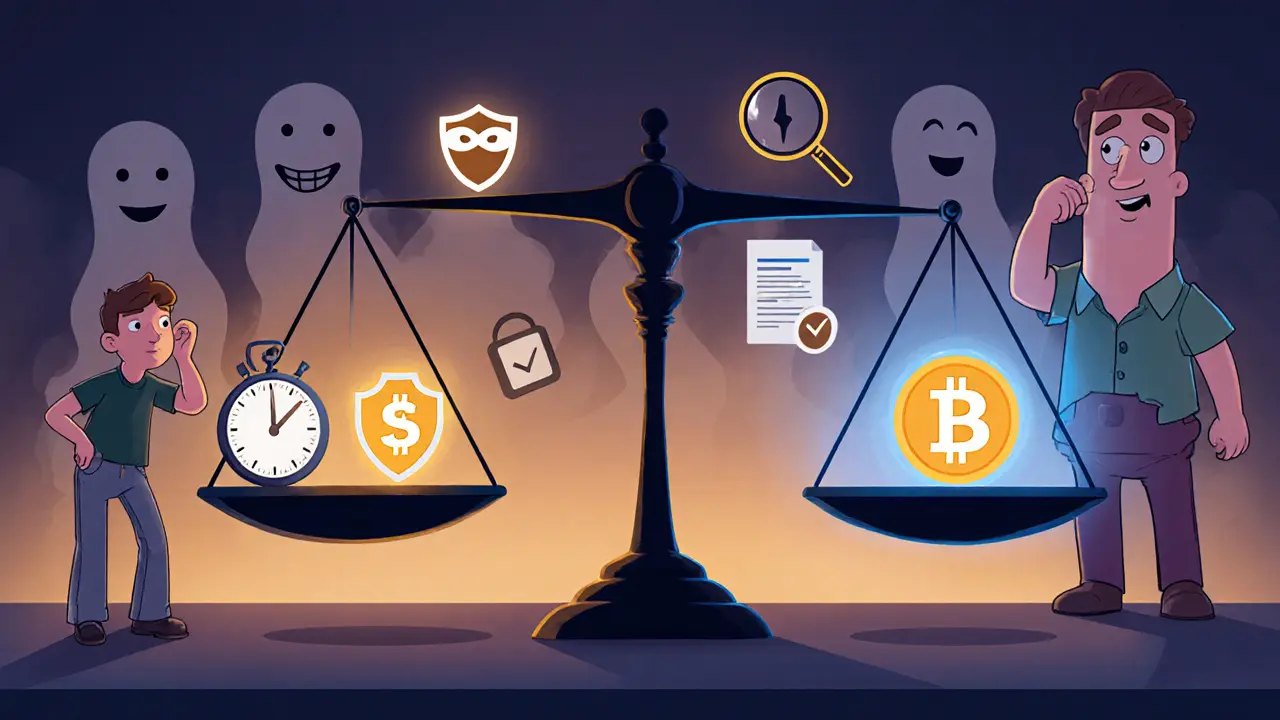
How CriptoSwaps Stacks Up Against the Big Players
While we can’t pull exact numbers, a quick side‑by‑side look helps you decide if the anonymity and speed outweigh the missing transparency.
| Feature | CriptoSwaps | Coinbase | Kraken |
|---|---|---|---|
| KYC Requirement | No KYC for swaps under $10k | Full KYC mandatory | Full KYC mandatory |
| Cross‑chain Swaps | Supported (bridge details hidden) | Limited (mostly ERC‑20, few others) | Limited (via add‑on services) |
| Proof‑of‑Reserves | Not published | Quarterly audit publicly available | Quarterly audit publicly available |
| Fees (service) | ~0.1‑0.3% (unconfirmed) | 0.5% maker, 0.6% taker | 0.16% maker, 0.26% taker |
| Customer Support | Email only, no live chat | 24/7 live chat, phone | Live chat, ticket system |
For users who only need quick swaps and don’t care about regulatory compliance, CriptoSwaps could be a handy tool. For anyone holding large balances or needing fiat on‑ramps, the established exchanges still win.
Step‑by‑Step: Getting Started with CriptoSwaps
- Install or open your preferred Web3 wallet (MetaMask, Trust Wallet, etc.).
- Navigate to the CriptoSwaps homepage and click “Connect Wallet.”
- Authorize the connection in your wallet pop‑up.
- Select the token you want to sell and the token you want to receive.
- Review the estimated price, slippage tolerance, and gas fee.
- Confirm the transaction; your wallet will prompt you to sign.
- Wait a few seconds for the smart contract to settle. The received token appears directly in your wallet.
Because no KYC is required, you can repeat the process as often as you like, but keep an eye on network gas prices - they can make a “cheap” swap feel pricey.
Final Thoughts on the CriptoSwaps crypto exchange review
CriptoSwaps fills a niche that many traders crave: fast, wallet‑only swaps without a lengthy verification process. The platform’s lack of public audits, vague fee schedule, and missing regulatory disclosures mean you’re trading on trust rather than hard data. If you’re moving small amounts, testing arbitrage routes, or simply want to avoid a centralized order book, give it a spin. For larger portfolios, stick with exchanges that publish proof‑of‑reserves, have clear insurance policies, and offer 24/7 support.
Frequently Asked Questions
Is CriptoSwaps regulated in any jurisdiction?
As of October 2025, CriptoSwaps does not display any licensing information or regulator approval on its site. That suggests it operates as an unregulated service, which may limit access for users in jurisdictions with strict AML/KYC rules.
Can I swap any token on CriptoSwaps?
The platform supports a wide range of popular tokens (ERC‑20, BEP‑20, Solana SPL, etc.), but exotic or newly launched coins might be missing. The token list updates automatically based on liquidity sources.
What are the typical fees I should expect?
Besides the blockchain’s gas cost, CriptoSwaps advertises a service fee around 0.1‑0.3 %. Since the exact figure isn’t published, you’ll see the final number after entering the trade details.
Is my private key ever stored by CriptoSwaps?
No. The platform only interacts with your wallet via signed transactions. Your private key never leaves your device.
How does CriptoSwaps handle failed swaps?
If a swap reverts on‑chain (e.g., due to insufficient liquidity), the transaction is rolled back and you keep the original token. Gas is still charged, so keep a small reserve for failed attempts.
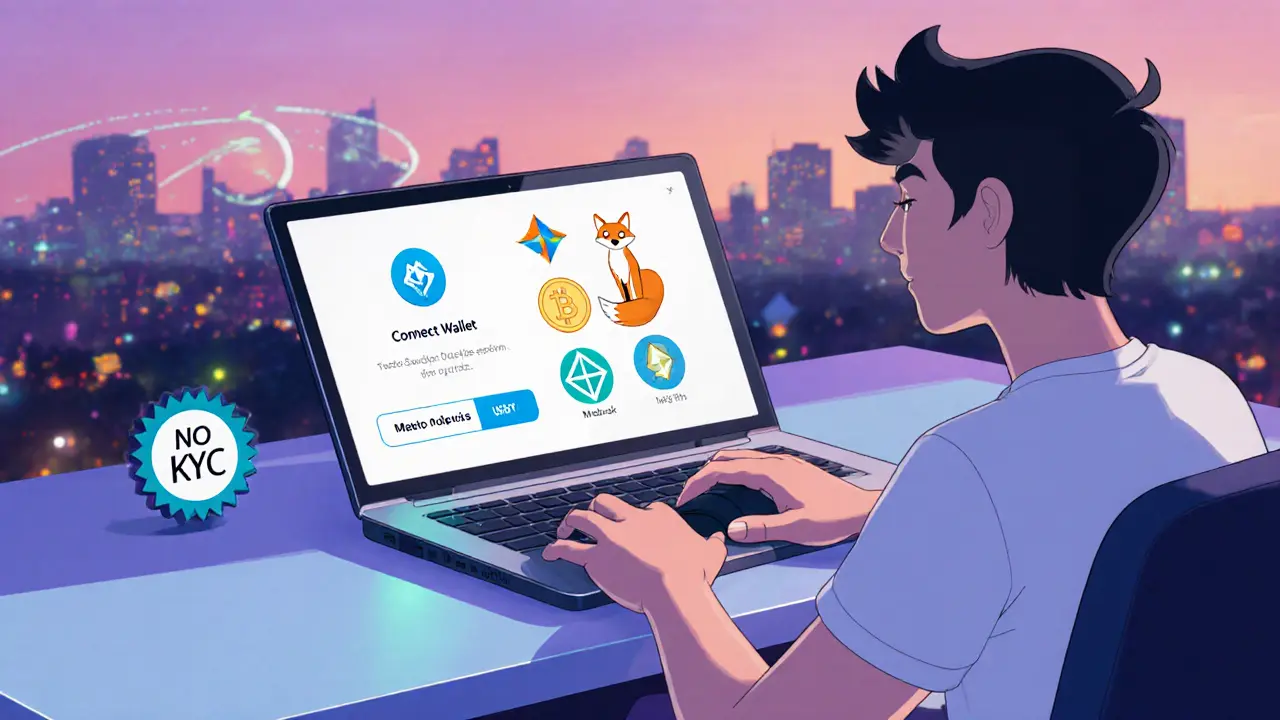

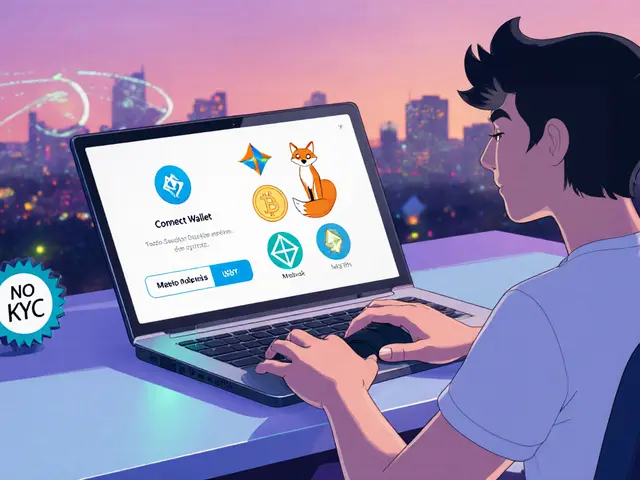
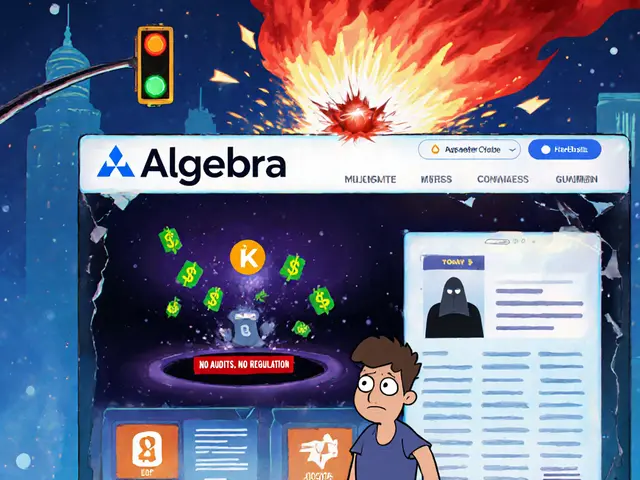
Comments
Oh great, “no‑KYC” means I can hand my private keys to anyone who promises instant swaps.
If you're looking for a quick way to move tokens without the hassle of an account, the wallet‑only model can be a real time‑saver. Just make sure you double‑check the slippage settings before you hit confirm, because network congestion can bite you hard. I’ve seen newcomers lose a few percent on forgotten gas spikes, so keep a small reserve of ETH for those moments. Also, consider testing with a tiny amount first to get comfortable with the UI. Once you’re familiar, you’ll appreciate the seamless MetaMask integration.
Behind the sleek interface, there could be undisclosed back‑doors that siphon funds when you’re not looking. The lack of a proof‑of‑reserves audit should set off alarms for anyone who cares about custodial risk. Even if the smart contracts are open source, the bridge operators remain opaque. Remember, every “no‑KYC” service is a potential vector for money‑laundering schemes that can attract regulatory crackdowns. Stay vigilant and consider the hidden cost of anonymity.
The platform leverages liquidity aggregators like 1inch and Paraswap to source optimal routes across multiple DEXes, which can dramatically reduce slippage. When you initiate a cross‑chain swap, the protocol likely employs a LayerZero or Axelar bridge to lock assets on the source chain and mint equivalents on the destination. This “peer‑to‑contract” model ensures that the private keys never leave your wallet, preserving self‑custody. Still, you should monitor gas fees, especially during peak Ethereum congestion, as they can erode the nominal 0.1‑0.3% service charge. In practice, a well‑timed swap can be both cost‑effective and secure.
The notion of swapping without a central gatekeeper invites a contemplation of trust in code over institutions.
In the age of decentralized finance, the contract becomes the arbiter of honesty, but it is still written by human hands.
When you connect your wallet, you are essentially signing a pact with an immutable script that promises execution.
This pact, however, is bounded by the underlying bridge mechanisms that have their own governance models.
If those bridges harbor hidden custodial layers, the illusion of anonymity dissolves like mist under scrutiny.
Moreover, the absence of a publicly audited proof‑of‑reserves report leaves a veil over the platform’s actual solvency.
One might argue that the transparency of the blockchain compensates for this opacity, yet opaque off‑chain components remain a blind spot.
Consider also the regulatory tide, which increasingly casts a net over services that operate in the shadows of KYC exemptions.
The trade‑off between speed and compliance is not merely a technical choice but a philosophical stance on user sovereignty.
In practical terms, a user must weigh the convenience of instant swaps against the potential cost of a failed transaction due to insufficient liquidity.
Gas fees, while unavoidable, become a silent tax that can turn a cheap swap into an expensive endeavor.
The platform’s claim of “low fees” is therefore relative, hinging on network conditions that fluctuate like market sentiment.
From an ethical perspective, the lack of disclosed security audits may signal a willingness to operate beyond the reach of conventional oversight.
Yet, for the privacy‑conscious trader, the very fact that keys never leave the wallet may outweigh these concerns.
Ultimately, the decision rests on an individual’s risk appetite, philosophical alignment, and confidence in the invisible code that powers the swap.
Speed is everything!!! Jump in, swap fast, and keep an eye on gas fees!!!
While the promise of anonymity is alluring, the glaring lack of regulatory compliance makes CriptoSwaps unsuitable for serious investors who demand accountability and transparent audit trails.
It’s interesting to see a service that focuses purely on the swapping experience without the usual onboarding frictions.
One must acknowledge that reducing an exchange to a mere “swapping experience” disregards the intricate risk management frameworks that distinguished platforms employ.
From an ethical standpoint, operating without any licensing or compliance framework raises profound concerns about the protection of users’ assets.
It's a valid point, but if you start with small amounts and treat each swap as a learning exercise, you can mitigate exposure while still benefiting from the platform’s speed.
Although the interface is sleek, the absence of publicly verifiable security measures makes the platform a high‑risk venue for capital preservation.
Could you elaborate on which specific security audits you would consider essential for a service that claims to be both fast and anonymous?
Our nation’s crypto ecosystem deserves platforms that respect sovereign regulations!!! This “no‑KYC” model feels like a betrayal of national financial integrity!!!
i think the real danger isnt the kyc it's the unknown back end code that could be leeking data or even sprouting hidden backdoors. we cant just trust the front end w/out proof.
Wow, the drama around this exchange is absolutely riveting; every new detail feels like another twist in a crypto thriller.
Indeed, the excitement is part of the journey-embrace the learning curve, stay informed, and the experience can be both rewarding and educational.
Don't be naive; excitement won't protect you from hidden fees and regulatory crackdowns.